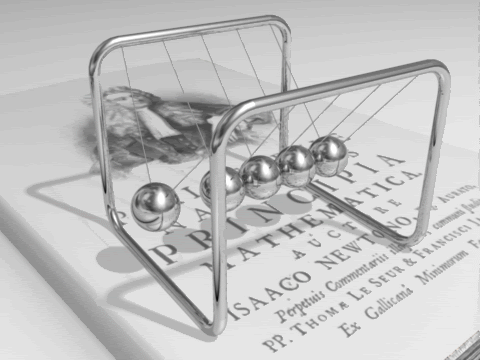Christian students entering into the field of science will face great challenges, especially if they choose to question the naturalistic worldview that dominates todays scientific establishment. Christians doing science has been given a bad rep by the media in recent years. Books like Richard Dawkins' The God Delusion and Christopher Hitchens God is Not Great, along with docu-dramatizations such as Bill Maher's recent Religulous, have brought much public attention to the New Atheism, which seems to have as its fundamental mission the eradication of all forms of religion, with Christianity at the top of the hit list. At the same time, the public hears news about such situations as the Dover, Penn. trials on the teaching of Intelligent Design in schools. Or rather, the public hears the media portrayals of the Dover ID trials, which often do injustice to the actual circumstances. More often than not, media portrayal of cases involving religion and science are incomplete, inaccurate, and biased. Conventional wisdom is that Faith and Science are like Oil and Water — they don’t mix. Or worse, they are like Sodium and Water, with explosive results when they do mix.
 But like a Newton's cradle, when a ball strikes on one side, another ball rebounds in reaction. This wave of anti-religious media has caused a number of books to be written in response, such as God's Undertaker: Has Science Buried God? by John Lennox (spoiler alert: his answer is "no!"), What's So Great About Christianity? by Dinesh D'Souza, and The Devil's Delusion by David Berlinski. The potential positive result is that those people who take the time to carefully read and think through the points presented by both sides will realize that Christianity does have a reasonable response to all the attacks against it that have been raised by the New Atheists. But the ones who approach both sides with an even hand are rare; most people simply subscribe to the misportrayals of the other position given by their preferred side. And sometimes these misportrayals are so ubiquitous that even those who are being misportrayed believe that this is actually the way things are.
But like a Newton's cradle, when a ball strikes on one side, another ball rebounds in reaction. This wave of anti-religious media has caused a number of books to be written in response, such as God's Undertaker: Has Science Buried God? by John Lennox (spoiler alert: his answer is "no!"), What's So Great About Christianity? by Dinesh D'Souza, and The Devil's Delusion by David Berlinski. The potential positive result is that those people who take the time to carefully read and think through the points presented by both sides will realize that Christianity does have a reasonable response to all the attacks against it that have been raised by the New Atheists. But the ones who approach both sides with an even hand are rare; most people simply subscribe to the misportrayals of the other position given by their preferred side. And sometimes these misportrayals are so ubiquitous that even those who are being misportrayed believe that this is actually the way things are.
Consider these three common statements about the history of science and Christianity, gleaned and paraphrased from various articles and web postings:
- Medieval Christians believed that the Earth was flat, until Columbus proved the Church wrong.
- The Trial of Galileo was an example of how the Church placed dogmatic religious belief in geocentrism over the scientific evidence for heliocentrism.
- The Scientific Revolution was a triumph of reason over religion, as the early scientists applied science to undermine the authority of the Church.
The general belief is that Christians have always been opposed to science, holding on against the evidence to “anti-scientific” views such as:
- A flat Earth
- Geocentrism
- The Universe was created by design
Here's an example of this caricature (credit Steve Sack, Star Tribune, August 5, 2005):
Consider the conclusion of historian of science Colin Russell in his essay, The Conflict Metaphor and its Social Origins:
The common belief that… the actual relations between religion and science over the last few centuries have been marked by deep and enduring hostility… is not only historically inaccurate, but actually a caricature so grotesque that what needs to be explained is how it could possibly have achieved any degree of respectability” (quoted in John Lennox, God’s Undertaker, p. 26-27).

Kendalf,
You might also find some of this information helpful to you:
Scopes Trial
Galileo
Religion vs Science
Religious scientists
Science info
Lots of links (sorry about that); but what you're doing is a good thing, and worth supporting.
Thanks for the links, MedicineMan! It's great to know that there are so many resources available providing the whole story of these caricatures and myths!